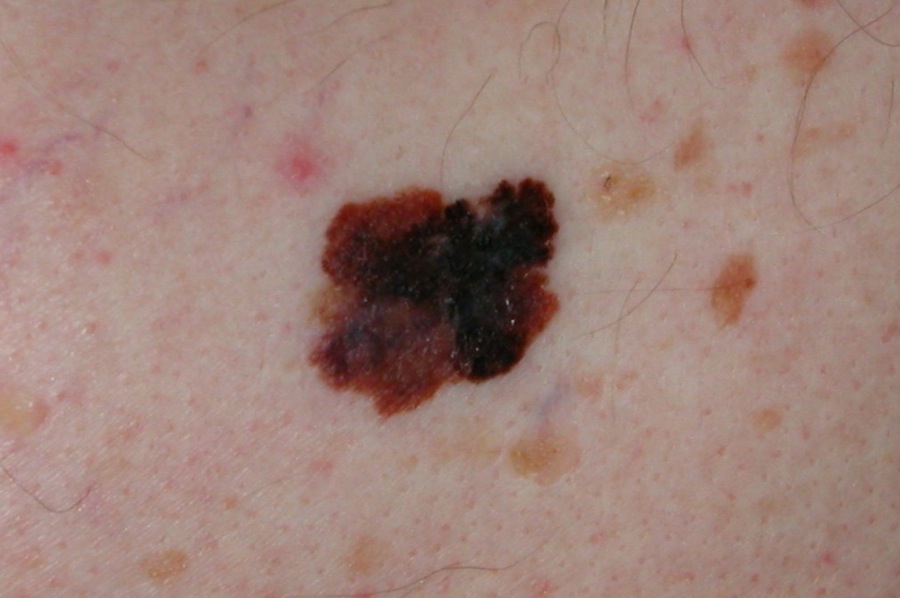
This melanoma has all the features: large, irregular edges, multicolored, with some very dark black areas.

This melanoma has all the features: large, irregular edges, multicolored, with some very dark black areas.
Melanoma is a potentially fatal neoplasm of the skin originating from melanocytes. It is the most deadly of the common skin cancers and its incidence is on the rise. However, in countries with aggressive sunscreen use (e.g., Australia), rates may be leveling off.
The average lifetime risk of a person born in the US today to develop a melanoma is as follows:
| Race | Risk |
|---|---|
| Non-Hispanic Caucasian male | 1 in 41 |
| Non-Hispanic Caucasian female | 1 in 61 |
| Hispanic | 1 in 200 |
| Asian and Black | 1 in 1000 |
The following table tries to quantify the risk for various factors. A relative risk (RR) of 2 means double the risk. An RR of 1.5 means a 50% elevated risk.
| Feature | Relative Risk |
|---|---|
| Personal history of and a parent with melanoma | 30 |
| Personal history of melanoma | 9 |
| Two or more first degree relatives with melanoma | 5.5 |
| Over 100 moles | 5 |
| Red hair (compared with dark hair) | 3 |
| Always burns, never tans | 2.3 |
| One first degree relative with melanoma | 2.24 |
| Prior use of Viagra (for men) | 2.2 |
| The presence of 2 large (dysplastic) nevi | 2 |
| Airline pilot or crew | 2 |
| Parkinson's disease | 2 |
| Freckles | 2 |
| History of BCC or SCC | 2 |
| History of 10 or more severe sunburns | 2 |
| Usually burns, tans some | 2 |
| Blonde hair (compared with dark hair) | 2 |
Other factors that increase risk include:
In a study of melanoma in the US from 1975-2006 [Cancer Epidemiol Biomarkers Prev. 2010;19:2401], the specific body site distribution was as follows:
| Site (Men) | Percentage |
|---|---|
| Trunk | 40% |
| Head/Neck | 24% |
| Arms | 21% |
| Legs | 9% |
| Other | 5% |
| Site (Women) | Percentage |
|---|---|
| Legs | 32% |
| Arms | 26% |
| Trunk | 25% |
| Head/Neck | 14% |
| Other | 4% |
A Asymmetric shape
B Border, irregular
C Colors, multiple or dark black
D Diameter, 7 mm. or greater
E EvolvingAny lesion with 2 or more should be removed. See also Mole vs. Melanoma and pictures below..
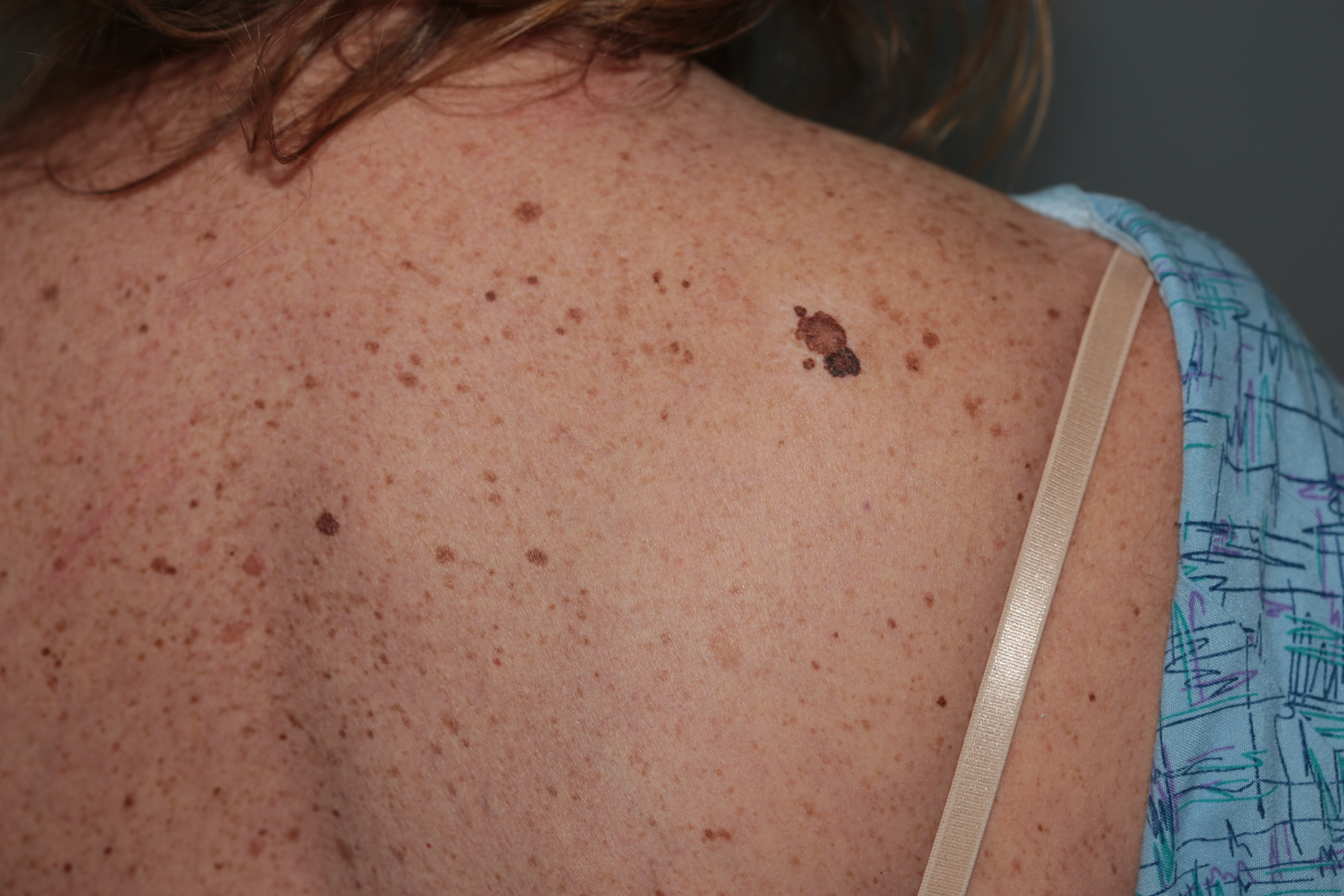

The "ugly duckling sign" of melanoma refers to the fact that a melanoma often looks different from the other moles. This spot on the upper back was a melanoma.
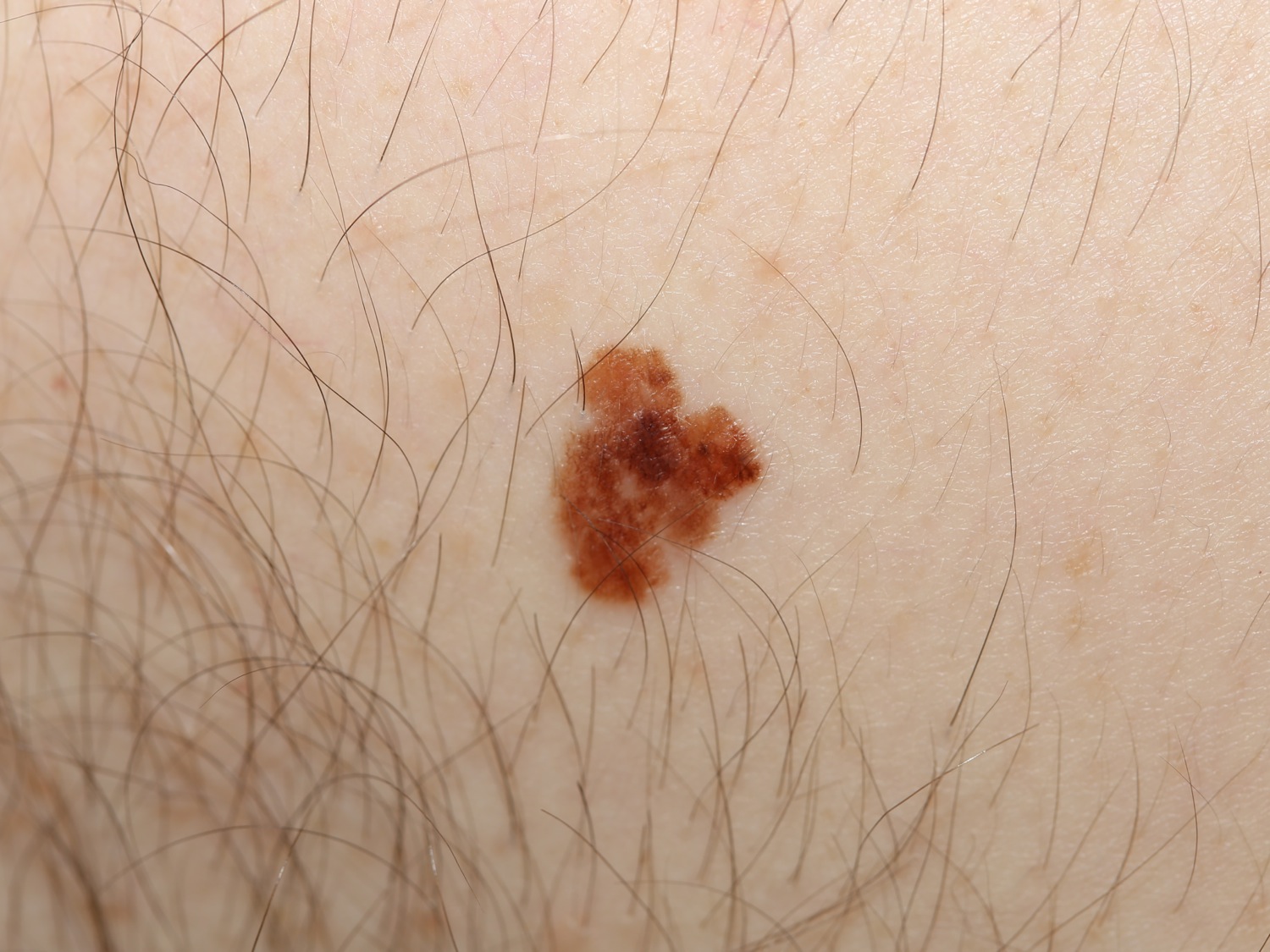
A melanoma is often assymmetry in shape (or color).

An irregular, notched border is a worrisome sign (here a melanoma).
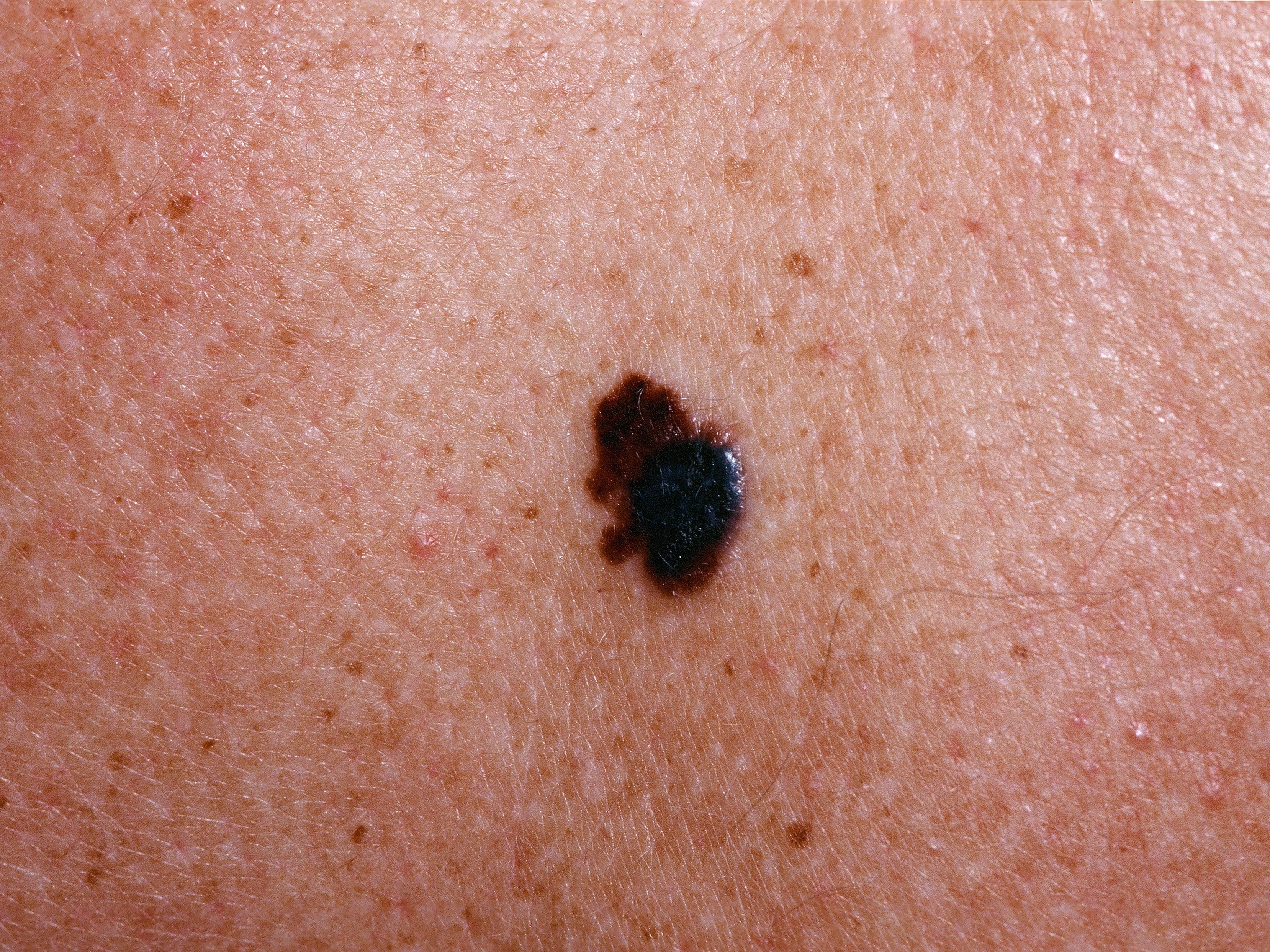
A very dark black or a multi-colored mole is a worrisome sign (here a melanoma).
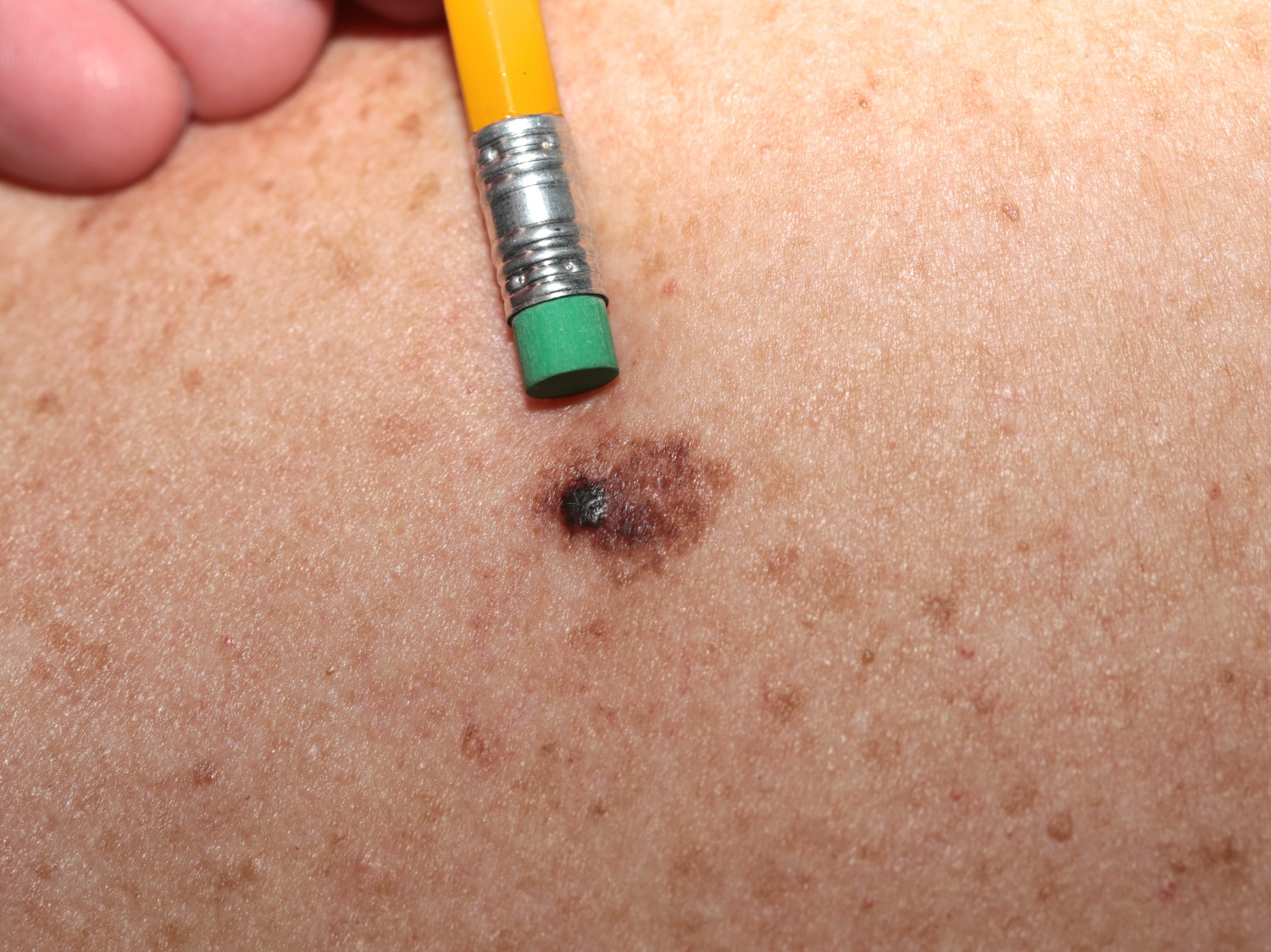
Diameter 7 mm or greater ("larger than a pencil eraser") is a worrisome sign (here a melanoma).

The dark growth in this "mole" was new (and turned out to be a melanoma).
Who is Dr. White? | Privacy Policy | FAQs | Use of Images | Contact Dr. White